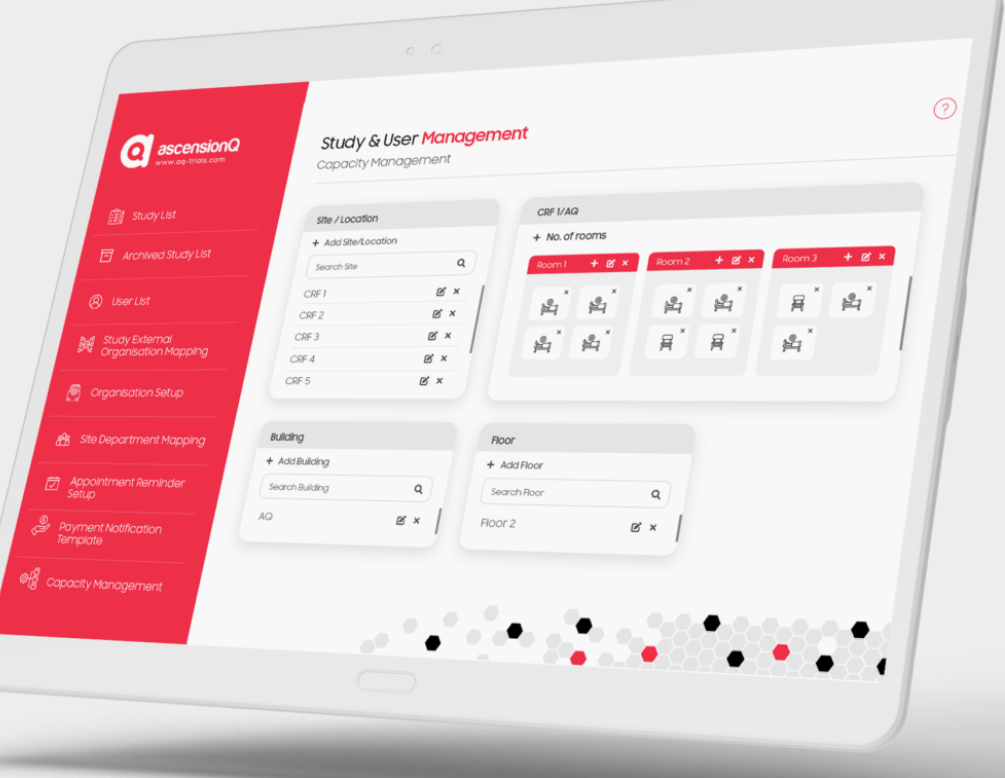CTMS VS EDC - What’s their Role and Difference in Clinical Research?
Table of Contents
ToggleAQ

Clinical trial management systems (CTMS) and electronic data capture (EDC) software are designed to simplify and automate the intricate processes of clinical research. CTMS focuses on the management and coordination of the trial’s administrative aspect — whereas EDC software is dedicated to the collection and management of patient data. Both serve different but complementary roles, ensuring efficiency, accuracy, and success.
Let’s study in detail what is the difference between CTMS and EDC.
Aspect | Clinical Trial Management System (CTMS) | Electronic Data Capture (EDC) |
Primary Focus | Operational and administrative aspects of clinical trials. | Collection, validation, and management of clinical data. |
Data Types Managed | Operational and administrative data related to trial management. | Clinical data, including patient records, laboratory results, and adverse event reports. |
Integration Capabilities | Can integrate with EDC and other systems to streamline overall trial management. | Designed to integrate with CTMS and other tools for efficient data flow and reporting. |
Regulatory Compliance | Ensures compliance with regulatory requirements in operational aspects of clinical trials. | Designed with regulatory compliance in mind for data management, security, and integrity. |
Market Value and Growth | Valued at $1.1 billion in 2020, expected to reach $2.1 billion by 2027, with a CAGR of 12.2% (Global Market Insights). | Projected to reach $3.66 billion by 2027, with a CAGR of 13.1% from 2020 (Grand View Research). |
Adoption Rates | 97% of clinical research organizations and 85% of sponsors used CTMS in 2021 (Veeva Systems). | Adoption rates exceeding 60% in the United States (Journal of Clinical Research Best Practices). |
Clinical Trial Management System (CTMS)
CTMS, when built with a high-end technology stack, helps to proactively manage the operational aspects of clinical trials. It centralizes everything, ensuring that clinical trials are conducted efficiently, within budget, and in compliance with regulatory requirements. It provides real-time insights into trial progress and facilitates better decision-making all the way long.
The key functions of a CTMS include the following:
Patient recruitment and enrollment tracking
Site management and monitoring
Budget and financial management
Regulatory compliance and documentation
Investigator and site performance tracking
Protocol management
Document and study milestone tracking
Data integration with other systems
Site feasibility and planning
Adverse event and safety reporting
Inventory management (for investigational products)
Communication and collaboration tools
Real-time reporting and analytics
Electronic Data Capture (EDC)
EDC is a clinical research software system used for collecting, validating, and managing clinical trial data electronically. It is primarily focused on ensuring error-free, faster data collection and analysis, which is a critical component of clinical trials. It also facilitates remote data capture, making it easier for investigators and patients to participate in trials.
The key functions of a future-proof EDC include the following:
Digital data collection from various sources, such as case report forms (CRFs)
Real-time data entry, data validation, and data cleaning
Secure data storage and management
Electronic patient diaries and data capture from medical devices
Audit trail and data quality control
What is the Difference Between CTMS and EDC?
CTMS can be used to schedule and monitor the timelines of various trial phases. It can help manage documentation for audit purposes or oversee the recruitment and activities of participants across different locations. Whereas EDC systems are employed to enter clinical outcomes directly into an electronic database. It’s also used to perform real-time data validation to minimise errors and support remote data entry. All while enabling participants to input data from their homes.
So What Exactly CTMS Can Do But EDC Can’t?
Manage logistics and operations at multiple clinical trial sites, all while facilitating site-specific communications and activities.
Track budgets, control expenses, manage billing and payments related to clinical trials.
Oversee staffing and schedules resources across various aspects of a clinical trial, including monitoring equipment and supply needs.
Maintain documentation and ensure adherence to regulatory requirements, including managing audit trails and submission documentation.
Handle overall project timelines, milestones, and the coordination of tasks across different teams involved in the trial.
Manage essential documents like study protocols, informed consent forms, and trial master files.
Provide detailed reports on trial progress, recruitment status, site performance, and other operational metrics.
Keep a check on contract negotiations and maintain records of agreements with trial participants, staff, and partner organisations.
How CTMS and EDC Complement Each Other?
Clinical Trial Management Systems and Electronic Data Capture systems serve distinct yet “complementary roles” in clinical trials. CTMS manages operational and administrative tasks, all while focusing on project planning, site management, and regulatory compliance. On the other hand, EDC handles the collection, storage, and verification of clinical data directly from trial participants.
The integration of CTMS and EDC streamlines clinical trial management. CTMS organises logistical tasks and ensures compliance with project timelines. EDC improves data collection accuracy and reduces errors compared to traditional paper methods. It enhances data integrity through built-in validation checks.
Indeed, integrated data insights from both CTMS and EDC systems offer a comprehensive view of trial progress. In fact, stakeholders can use their insights to make informed decisions and adjust strategies based on accurate, timely information.
What is Sequential Use of CTMS and EDC in Clinical Trials?
Clinical researchers can leverage CTMS and EDC in the following complementary sequence:
- Setup Phase: CTMS helps to organise trial logistics, site setups, and regulatory compliance. EDC is configured to align with the trial’s protocol for accurate data capture.
- Enrollment Phase: CTMS manages recruitment, tracking participants and scheduling visits. EDC starts capturing initial participant data.
- Active Trial Phase: EDC collects detailed clinical data such as outcomes and side effects. CTMS oversees logistical operations, site coordination, and financial management.
- Data Management Phase: EDC handles data review, cleaning, and locking for analysis. CTMS supports regulatory reporting and audit preparations.
- Close-Out Phase: CTMS facilitates site closure and compliance documentation. EDC ensures data is ready for final analysis.
- Reporting Phase: EDC outputs are analysed and results are compiled. CTMS aids in report distribution and documentation archiving.
CTMS VS EDC: Which is Right For You?
When deciding between Clinical Trial Management Systems (CTMS) and Electronic Data Capture (EDC) systems, it’s essential to consider the specific needs of your trial.
CTMS is your go-to solution when you need to manage the operational and administrative aspects of a clinical trial, whereas EDC is the right choice when your primary focus is on data collection and management.
There’s also a third and better option to consider: CTMS with integrated EDC systems. These solutions combine the capabilities of both CTMS and EDC into a single platform. They streamline the entire clinical trial management process, simplifying it by providing a comprehensive solution for administrative and data-related tasks. This means you can use the integrated platform for not only trial management but also data collection, data entry, data validation, and sometimes data analysis.
The integration of EDC features into CTMS can be particularly beneficial for organisations looking to reduce the complexity of managing multiple software solutions and enhance the efficiency of their clinical trial processes.
Ultimately, the decision should align with your clinical trial’s specific needs.
You may schedule a consultation call with the AQ Trials Team, as we can help you make an informed decision.
Related Articles
Industry Discussions
What is the Difference Between CTMS and eTMF
Clinical Trial Management System (CTMS) and Electronic Trial Master File (eTMF) are distinct in their roles and features within clinical trial research. CTMS emphasizes operational efficiency whereas eTMF focuses on safeguarding document integrity and ensuring regulatory compliance.
AQ Platform Updates
Accelerating Clinical Trials
Clinical Trial Management System (CTMS) has indeed emerged as a vital solution in the intricate domain of clinical research. From orchestrating to conducting and monitoring the diverse facets and collecting data integral to clinical trials—there’s a lot more that researchers can leverage from it. A CTMS offers a holistic solution that integrates various dimensions of clinical trials in one place.



